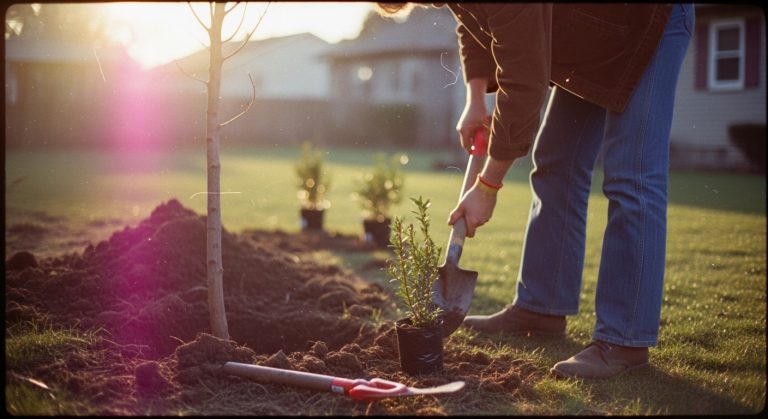
Every year I hear the same thing, “We like to get our trees in the ground in the spring when everything starts growing.” I even had one lady tell me at a fall landscape installation, that was a project of my church, “I ‘know’ fall is the absolute wrong time to plant trees and shrubs.”
It sounds reasonable to wait for spring, but with trees and shrubs it couldn’t be further from the truth.
In East Texas, spring (especially late spring) is one of the worst times to plant a tree unless you enjoy watching it struggle through heat, drought, and transplant shock. If you want a tree or shrub to actually thrive, mid-November is one of the best windows you’ll get all year.
The reason is simple: plants care far more about soil temperature than the page on the calendar. Our soil is still warm well into November, even as the air cools. That warm soil keeps roots growing and expanding long after the top of the plant has gone dormant. Above ground, everything looks still. Below ground, a new tree is quietly being established before it ever has to face a real, harsh summer.
Cooler air temperatures give new plantings another advantage. Lower heat means less water stress. A tree planted now isn’t trying to stay alive and stay cool in the heat while also trying to form new roots. Instead, it can settle in slowly, safely, and steadily through the next several months. Our East Texas winters are usually mild enough that root growth continues well into winter, giving new trees a head start before spring even arrives.
Mid-November is the perfect time to plant container-grown shade trees like oaks, redbuds, and bald cypress. Evergreen shrubs such as hollies and many landscape staples also do exceptionally well when planted now. If you’re thinking about fruit trees, you can plant container-grown ones this month too.
Be careful to focus on container grown trees as it’s still a bit early for bare-root trees. Save the bare-root varieties for deep winter.
Timing your planting in the fall isn’t the only key to success. Soil preparation is where most homeowners quietly doom their new trees. The shallow clay that many of us have can be a challenge, and simply digging a deep hole and tossing in potting mix is a mistake. Doing that creates a “bowl effect” that traps water around the roots. Instead, dig a hole that’s wide and shallow- only as deep as the soil in the pot. Break up the soil around the planting area so roots can move outward easily. Then backfill with the soil you removed. Mulch the surface two to three inches deep, but don’t pile it around the trunk like a volcano.
Watering during cool weather often confuses people. Even though the air is comfortable, new plantings still need consistent moisture around the root ball. Check the soil with your fingers every few days for the first couple of weeks. Keep it moist but not soggy, especially in clay. Overwatering is more common than underwatering this time of year, and it’s just as harmful. Remember, roots need to breath oxygen as much as they need to take up water.
Mid-November may not strike you as a planting month, but it’s one of the most forgiving windows of the whole year. Trees planted now gain months of quiet establishment before the stress of summer arrives. If you’ve lost trees in the past or struggled with spring plantings that never took off, consider giving this timing a try. Pick a quality tree, prepare the soil correctly, and take advantage of the cooler months. Your landscape will reward you next summer.